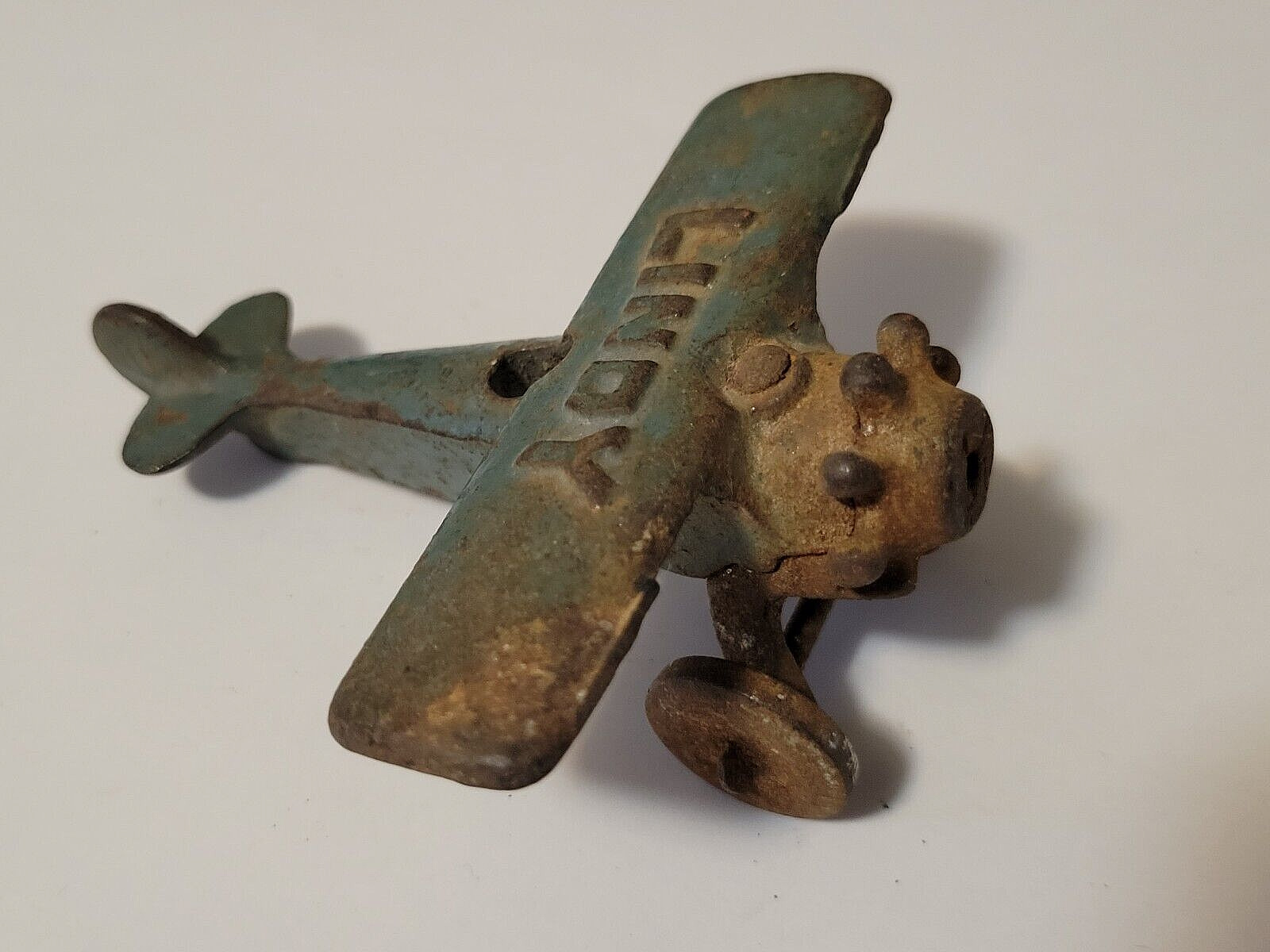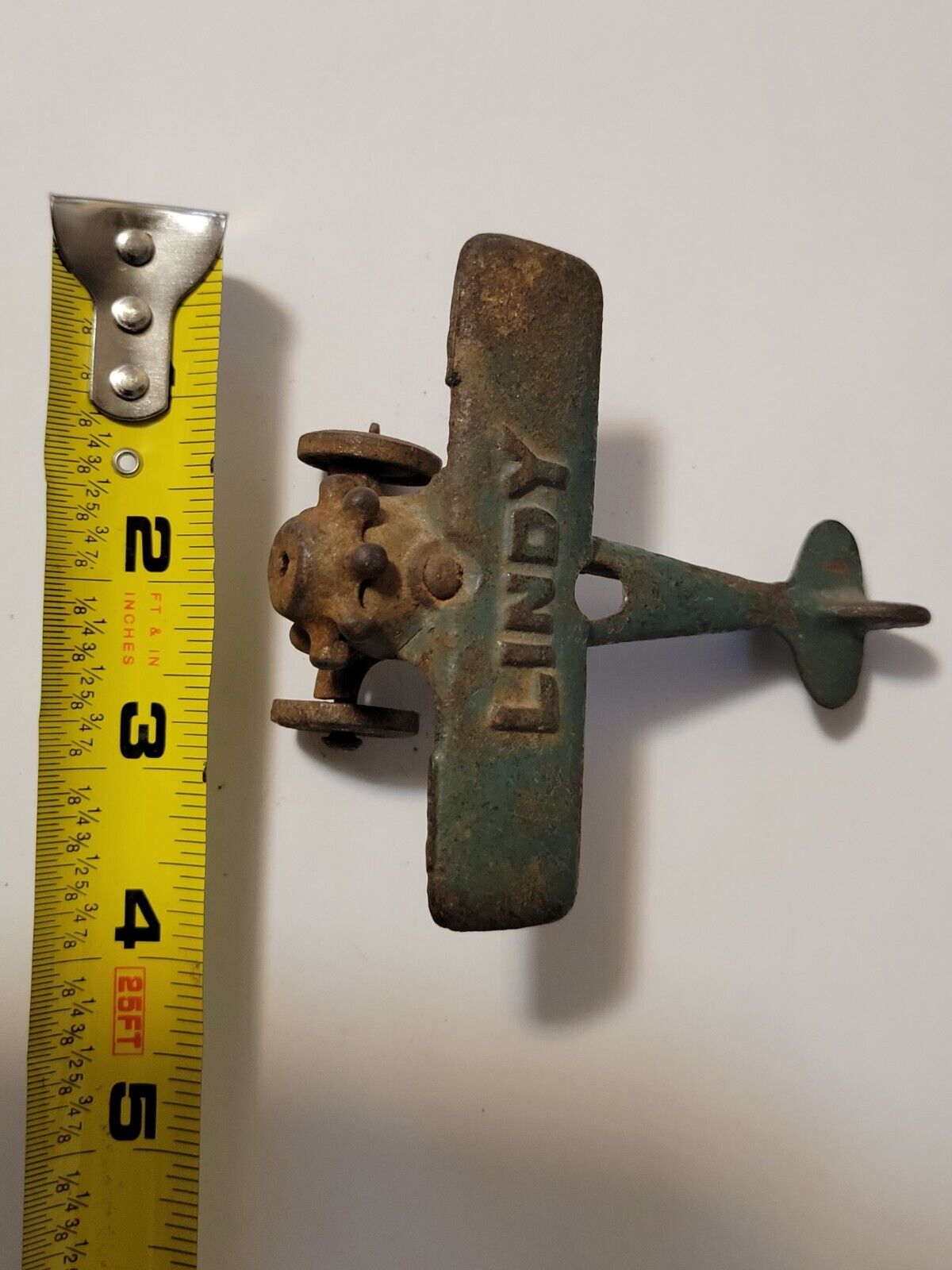-40%
Antique Charles Lindbergh LUCKY " LINDY" cast iron Metal Toy Airplane
$ 26.37
- Description
- Size Guide
Description
The Spirit of St. Louis" was designed with one thought in mind: to get to Paris. Extra fuels tanks were added and the wing span increased to accommodate the additional weight. The plane would have a maximum range of 4,000 miles, more than enough to reach Paris. One of the more innovative design decisions involved placing the main fuel tank in front of, rather than behind, the pilot's seat. Lindbergh didn't want to be caught between the tank and the engine if the plane was forced to land. This configuration also meant that Lindbergh would not be able to see directly ahead as he flew. It didn't seem to trouble him much. "There's not much need to see ahead in normal flight," Lindbergh told Donald Hall. "I won't be following any airways. When I'm near a flying field, I can watch the sky ahead by making shallow banks. All I need is a window on each side to see through..." If needed, Lindbergh would use a periscope attached to the plane's left side to see what was in front of him. In his efforts to pare down the plane's weight, Lindbergh considered every detail. Any item considered too heavy or unnecessary was left behind. These included a radio, parachute, gas gauges, and navigation lights. Lindbergh designed for himself special lightweight boots for the flight, and went so far as to cut his maps down to include only those reference points he would need. Every ounce mattered. Instead of a heavy leather pilot's seat, Lindbergh would be perched in a far lighter wicker chair.Propeller missing, thingie sticking out of hole in top of airplane missing.Some rust throughout time.
















